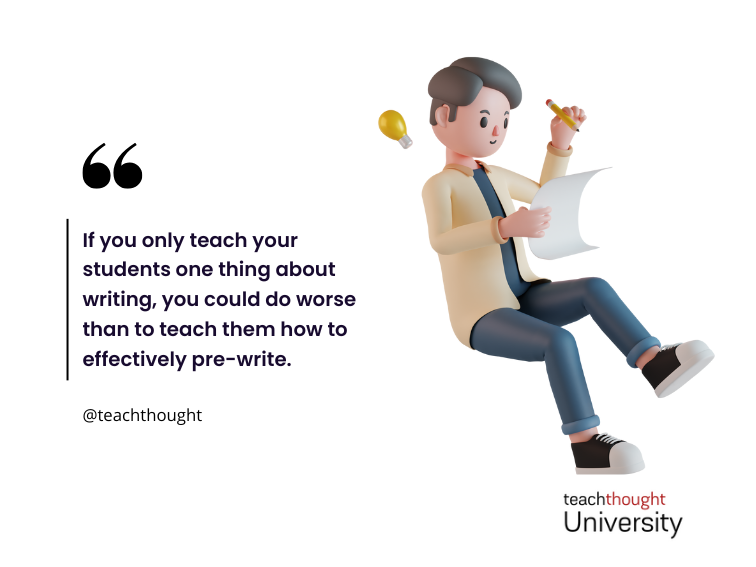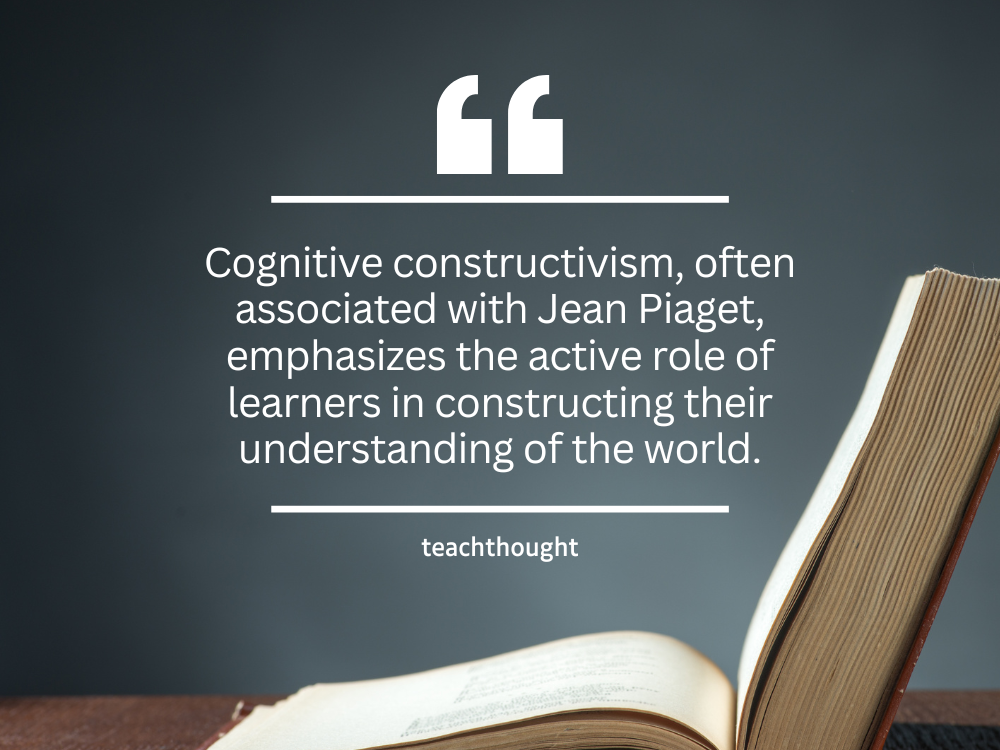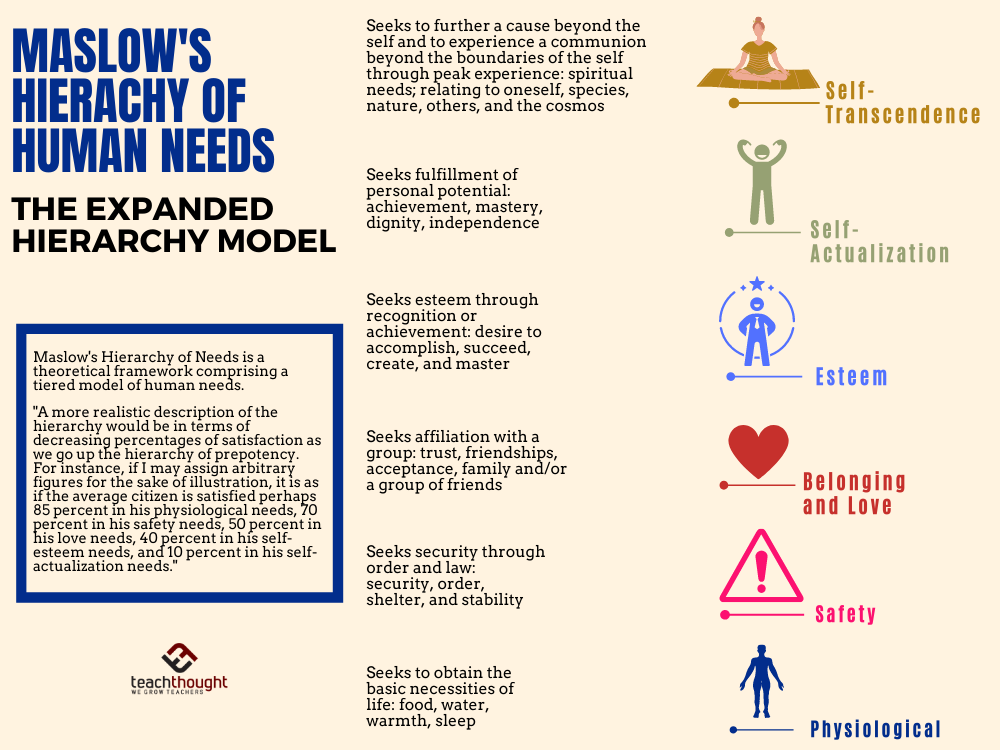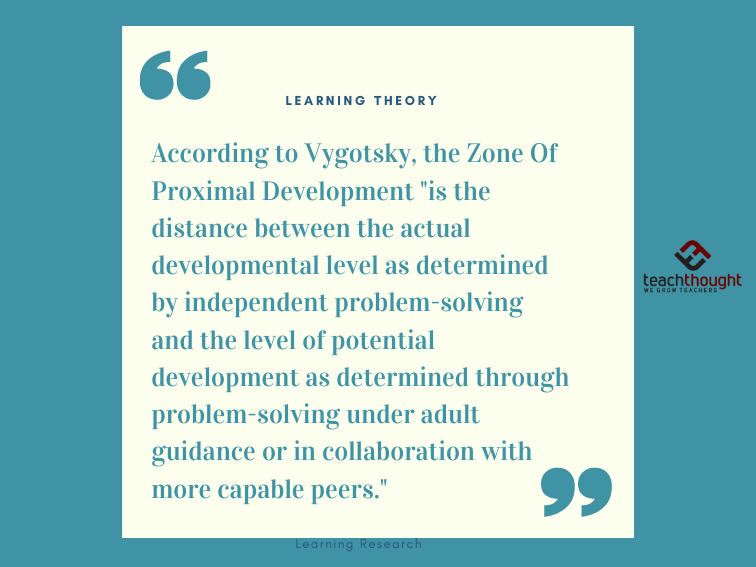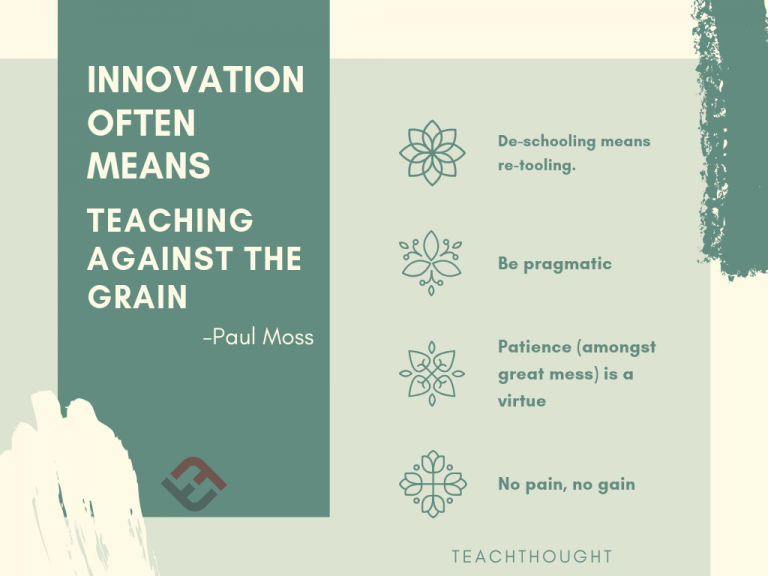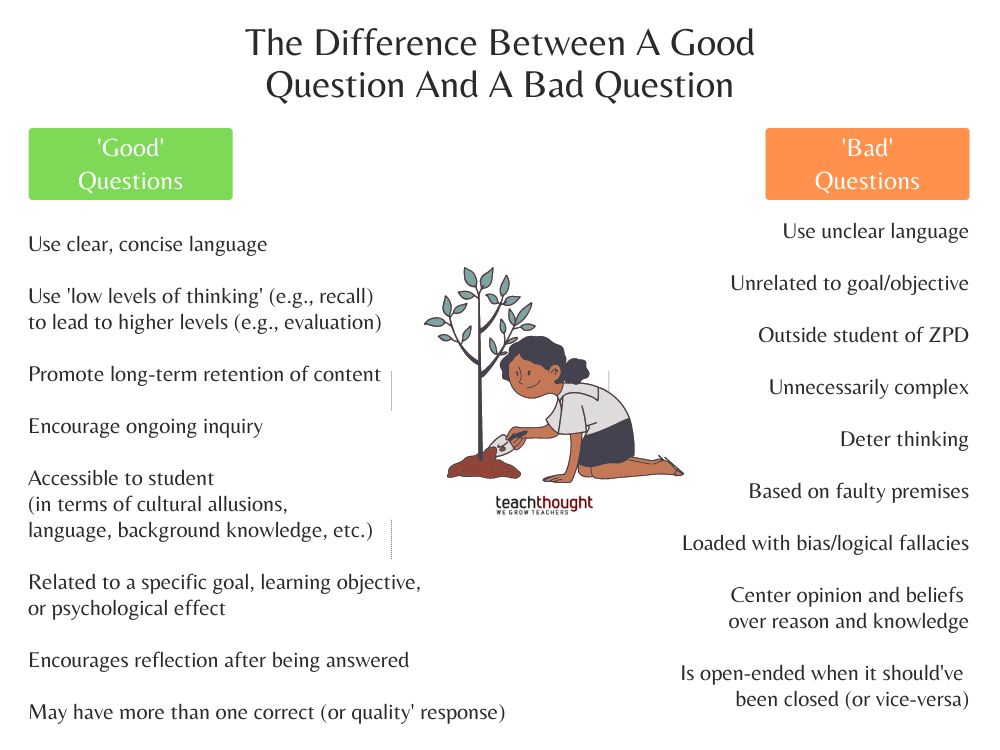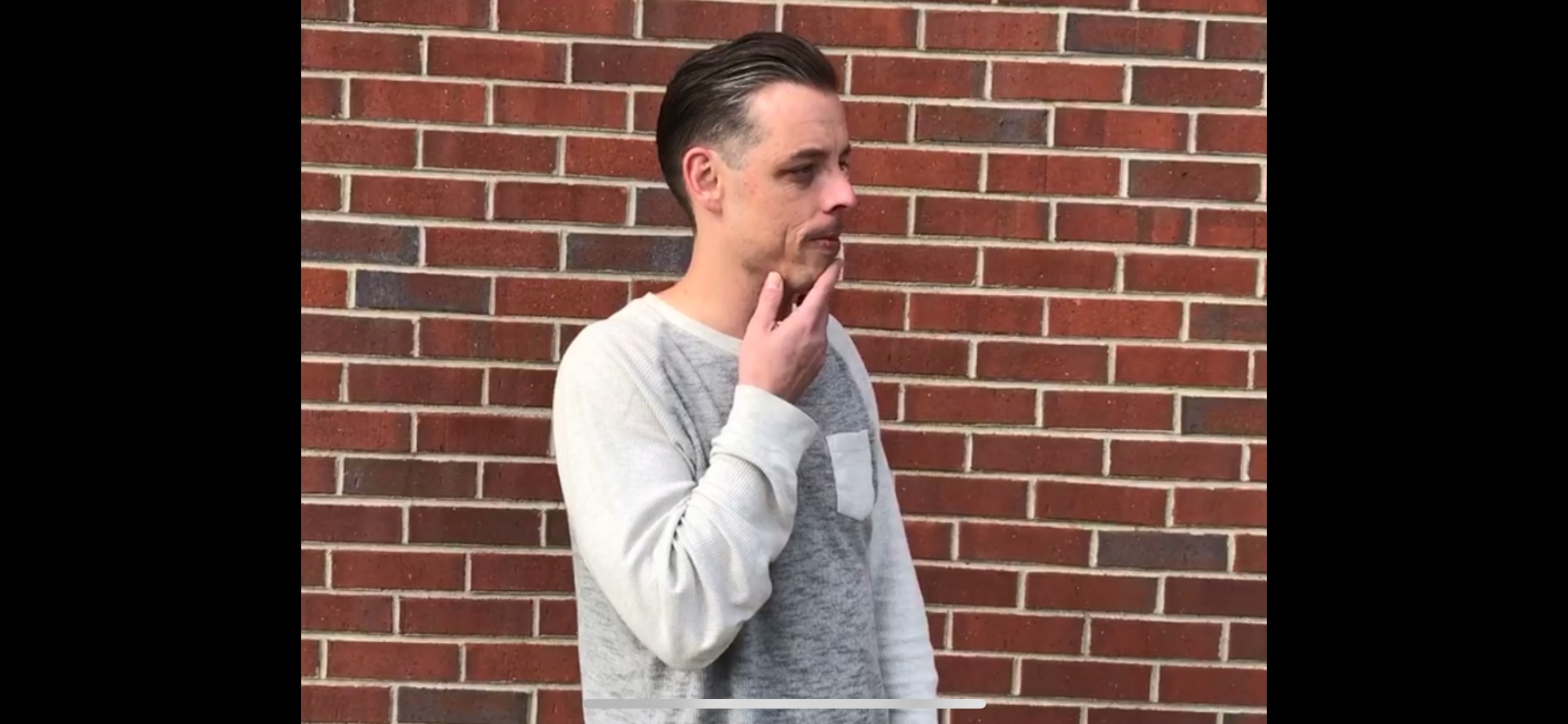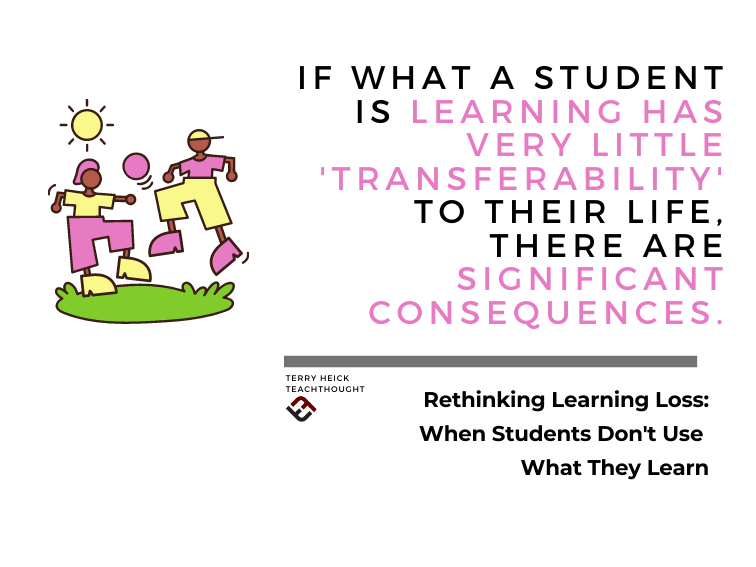
When Students Don’t Use What They Learn
by Terry Heick
With so much else to do and a subsequent loss of academic structure, most research shows children read less in the summer. How much less depends (you’ll read that word a lot in this post) on age, income level, geographical region, and other factors.
And how much of a bad thing you think it is for a student’s achievement scores to fall because of summer break depends on your perspective, too. But let’s assume you’re in favor of pushing academic achievement and the improved test scores that seem to reflect it. What do you need to know?
Well, first a glance at the research. As with many topics in education, you can find wildly varying research findings to support an equally wider variety of interpretations and takeaways. Want to fund a 1:1 program? Somewhere there’s research to support it. Against that idea? There’s likely data somewhere that agrees with you. But in general the research on summer reading loss says one of two things:
Summer does tend to reduce academic achievement
What it impacts and how depends on content area, income level, age, and more.
The Problem Of Non-Transferable Knowledge: When Students Learn Unuseful Things
For example, in ‘The Effects of Summer Vacation on Achievement Test Scores: A Narrative and Meta-Analytic Review,’ researches concluded that “the summer loss equaled about one month on a grade-level equivalent scale, or one-tenth of a standard deviation relative to spring test scores. The effect of summer break was more detrimental for math than for reading and most detrimental for math computation and spelling.”
But complicating general statements about seasonal changes on educational performance and literacy are socioeconomic concerns. The authors in the study above found that a “significant difference was also found for income level on the effect of summer vacation on reading recognition scores, low-income students showed a significant loss in reading recognition over summer while middle-income students showed a significant gain. DGLEs indicated that middle-income students gained about 2.3 months in reading recognition over summer, while lower-income students lost about 1.5 months.”
And grade level? Other studies have found that younger students (e.g., in kindergarten) often have better scores in the fall than the spring, while older elementary students (e.g., 4th and 5th grade) reverse that trend. ‘Summer setback,’ then, isn’t a simple issue, complicating efforts to make simple recommendations.
Rethinking ‘Learning Loss’
In 2014 post for edutopia, I provided basic recommendations, from starting digital book clubs to sending home high-interest texts or even simply staying in touch as often as possible with students through email or social media. How useful these ideas are depends on how old your students are, their relative access to technology, whether or not they’re on vacation, your amount of free time, and more.
One of the most universal patterns of learning in any context is to encounter a new idea, and then put that idea into action somehow, whether through near transfer or far. A daily pattern of reading, then doing something as the result of what’s been read can provide an easy framework for authentic learning outside of the classroom.
Reading Robert Frost? Extract a theme from ‘Good Fences Make Good Neighbors,’ and do something with it.
Say hello to a neighbor.
‘Tear down’ a metaphorical wall between you and an old friend or family member.
Make a painting on a wall that conveys Frost’s message.
Create a song that is the opposite in tone but the same in theme.
Put a ‘fence’ up to set a healthy boundary in a relationship.
In other words, read something worth reading, think about what you’ve read, then use that reading to inform your behavior in the real world in a way that’s authentic and useful to you.
The Problem Of Non-Transferable Knowledge
If what a student is learning has very little ‘transferability’ to their life (and note here, I don’t mean transfer in the sense of applying something you’ve learned in a new and unfamiliar context, but rather take something you’ve learned here and apply it there), there are significant costs and consequences. And note, this kind of transfer isn’t as simple. To actually use what’s been learned requires a student to reflect on what’s been learned, have a sense of the utility of that knowledge, and demonstrate vision or imagination or creativity in putting it to use.
That’s a lot, and this stands in marked contrast to the ‘long-tail’ view traditional academics take for standard-creation and curriculum design, where the value of what’s learned is low at the onset and is perceived to increase over time as students prepare to enter universities or ‘the workforce.’
The roots of every student lie in his or her community–their families, digital networks, and favored communities. Summer is a time where students have more of an opportunity to be closer to these roots. Reducing ‘summer loss’ might begin with helping them see what they have to gain during this time away from the classroom by seeking out and using information to improve their crucially native circumstances. Place-based education. Self-directed learning. Maker education. Open-ended projects. Personal challenges.
But why limit this thinking to summer? Authenticating the work that students do in the classroom is critical–and not just so that students improve their academic performance, but so we can know that the academics are actually serving them.
A school is only successful insofar as it is able to change the arc of students’ lives and the conditions of their communities.
— Terry Heick (@terryheick) July 5, 2016
An Underlying Assumption Of School
The point of school isn’t to get good at school. If students aren’t consistently transferring skills and understandings from the classroom to the real world, not only will their academic performance suffer, but we might want to ask some serious questions about what students are learning and why.
If teachers are working themselves to death to literally pull students through a body of knowledge that’s barely recognizable to students in their daily lives, could the artificiality of that knowledge be playing a factor in the challenge of helping all students master it?
The underlying assumption of any body of curriculum should be that it’s worthy of study and the real work of understanding. So what happens when the knowledge isn’t especially transferable? When it’s only narrowly useful, and completely impersonal? When students are coached to transfer, but can’t because the sweet spot of that knowledge is the classroom itself? When what they’re learning doesn’t make their lives richer or easier or safer or more compelling?
That’d be a big problem, wouldn’t it?
